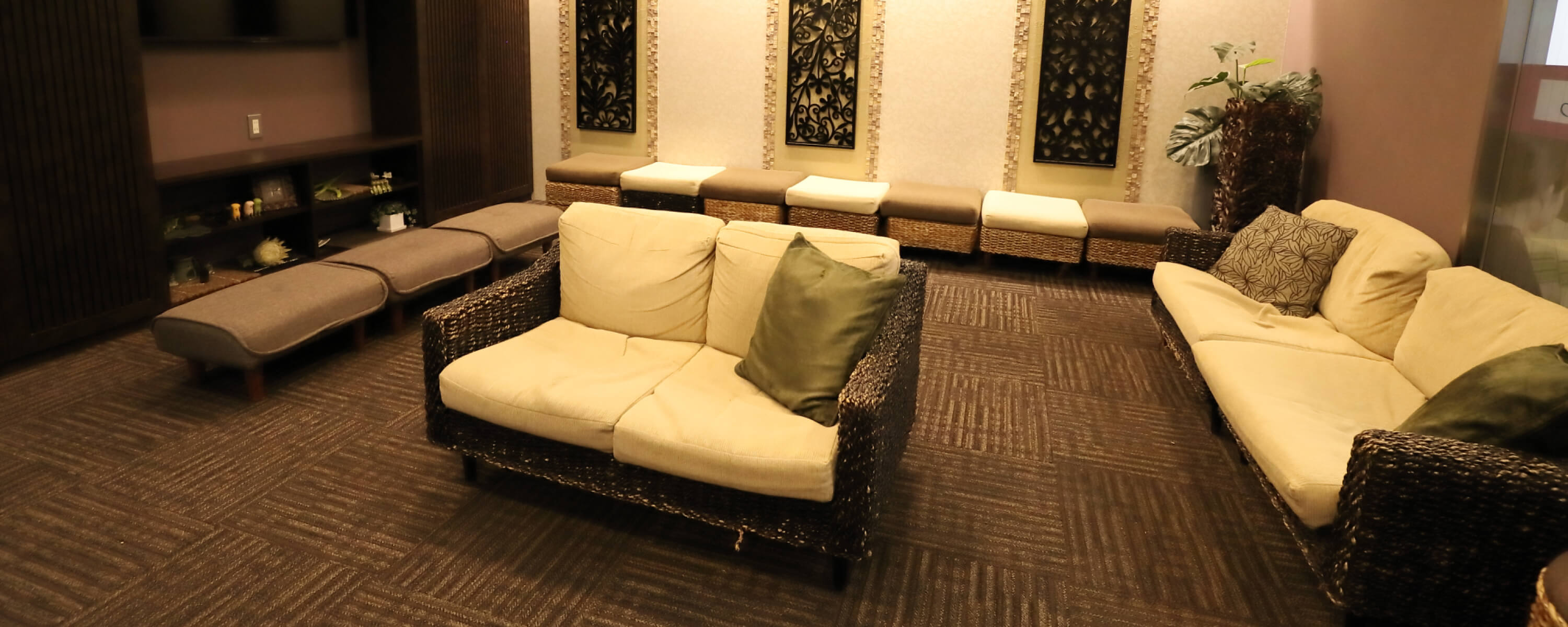Invisalign is a world-famous mouthpiece orthodontic treatment that can only be used by orthodontists.
It also provides reliable follow-up, and dentists who can use Invisalign must be certified orthodontists or have equivalent clinical experience.
At our clinic, treatment is carried out by orthodontists certified by Invisalign.
Mouthpiece Orthodontics (Invisalign)
Do you have any of these concerns about your teeth alignment ?
It's uneven- I'm worried about my underbite
- I want to fix my gaps
- I can't close my mouth
- Deep bite
- I am worried about my protruding teeth
All your problems will be solved with our
recommended treatment!
Transparent, discreet,
removable
mouthpiece orthodontics

Invisalign is an orthodontic system that uses nearly transparent mouthpiece-type orthodontic devices called "aligners" to straighten teeth.
The mouthpiece-type orthodontic devices are made to fit each patient's teeth, and are replaced at home once every two weeks to move the teeth little by little, so the system requires fewer visits to the clinic.
Invisalign is an orthodontic treatment practiced in over 45 countries around the world.
The first consultation regarding orthodontic treatment is free. Please feel free to ask us any questions or concerns you may have about the alignment of your teeth or the condition of your mouth.
Free consultation hereFor those who want to undergo orthodontic treatment but are concerned about their appearance
Invisalign is a wire-free orthodontic treatment, so you won't have to worry about the appearance.
You can always smile because you don't have to worry about negative aspects of your appearance, such as "I feel embarrassed to smile in front of others" or "I'm worried about my mouth when eating."
This type of orthodontic treatment is recommended for those who are concerned about their appearance or who have metal allergies.
World-famous mouthpiece orthodontics , available only to orthodontists

Features of Invisalign
1. Transparent, unobtrusive, and easy to talk to
Because we use a thin, almost transparent mouthpiece-type orthodontic device, it is almost unnoticeable by those around you, so even those who work in sales or customer service can discreetly straighten their teeth.
When you first wear the orthodontic device, you may feel a little uncomfortable and have difficulty speaking, but you will get used to it in about a week.
2. Removable and hygienic
They can be removed when eating or brushing your teeth, allowing you to easily care for your teeth at any time and keep your teeth and periodontal tissues clean.
3. It’s gentle on the body
The aligners used in Invisalign are made of plastic, so there is no need to worry about metal allergies. Even those who have given up on orthodontic treatment due to metal allergies can receive treatment with peace of mind.
4. Highly reliable orthodontic device recognized worldwide
Invisalign begins with the creation and review of a comprehensive treatment plan from the start to the end of treatment using a unique 3D simulation software called "ClinCheck."
Since the movement of the teeth can be grasped through images and videos, accurate treatment with minimal error is possible.
It is offered in over 45 countries around the world, and many patients are receiving treatment.
Invisalign is an orthodontic system that is constantly evolving and undergoing improvements to provide more reliable and comfortable treatment.
5. Fewer visits to the hospital
Invisalign creates all the aligners needed from the start to the end of treatment before treatment, so treatment requires fewer visits than traditional wire orthodontics.
(Basically, you will visit the clinic once every two months.)
How Invisalign moves your teeth
During Invisalign treatment, the doctor creates a ClinCheck (how the teeth move with Invisalign) one by one.
This ClinCheck is very important for Invisalign and the technique is very difficult. However, the doctor manages the orthodontic treatment by comparing this with the actual progress of the patient.
The patient can check the movement of the teeth on the completed Clincheck and can visualize the treatment progress clearly.
Precautions when undergoing Invisalign treatment
Invisalign requires that you wear the aligners for at least 20 hours a day, and generally 22 hours a day. If you take off the orthodontic appliance for too long, your teeth will not move as expected and your treatment period will be extended.
Since you need to remove the aligners when eating and drinking, those who eat out often will wear them for a shorter period of time. Since you can remove them yourself, you may be lazy. It is very important to manage your aligners properly yourself in order to get better treatment results.
Comparison of Invisalign and wire braces
| Invisalign | Wire straightening | |
| Treatment method | Uses clear, removable aligners (mouthpieces) | Uses fixed orthodontic appliances that use wires and brackets |
Appearance of the orthodontic appliance |
The mouthpiece is almost transparent, so it is hard to notice even when worn. | Brackets are fixed to your teeth and may be visible when you smile |
Removal of orthodontic appliances |
Easy to remove | It is difficult to remove until treatment is complete. |
| Effects of metal allergies | No metal used, so no worries | As it is made of metal, it may affect the oral cavity. |
| Caring for your teeth during treatment | You can remove the aligners and clean your teeth as you normally would. | Because braces are fixed to the teeth, it becomes difficult to care for your teeth and gums |
| Effectiveness of treatment | By gradually replacing your aligners, you can check the progress of your orthodontic treatment. | Because the device is fixed, it is difficult to see the progress of treatment. |
For those considering mouthpiece orthodontics
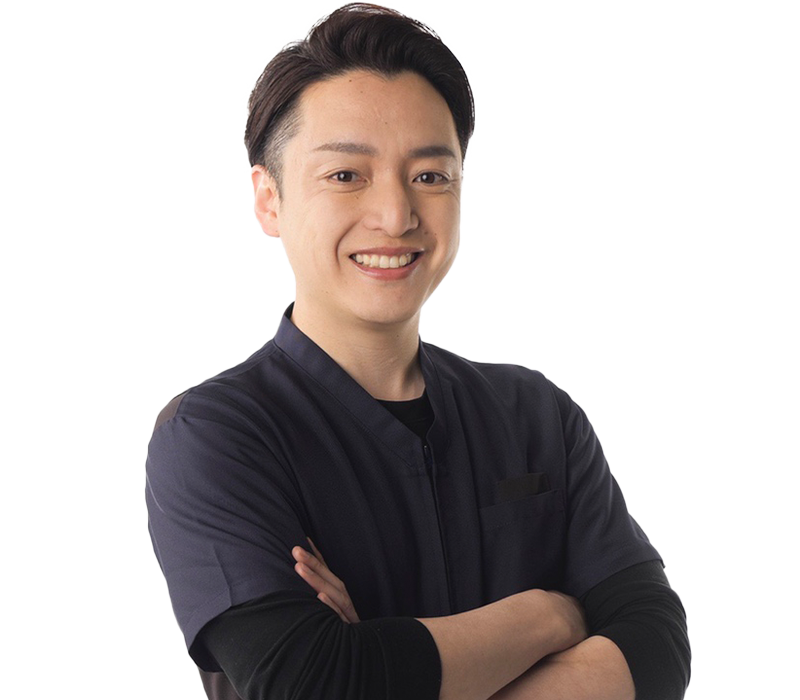
Hirotaka
Morimoto
I come to work on the last Tuesday of every month as an orthodontist who uses a mouthpiece-type orthodontic device called Invisalign.
I work hard every day in the clinic to provide patients with a mouth that can chew properly, rather than just straightening the mouth and aligning the teeth.
Invisalign orthodontic treatment is achieved through a detailed treatment plan and a cooperative relationship with the patient. If you have any concerns about your teeth alignment or bite, please feel free to consult us, no matter how minor.
We also provide accelerated orthodontic treatment and remote consultation. Orthodontic treatment that moves teeth faster and reduces the interval between visits is also possible.
Flow of Invisalign treatment
- First consultation counseling and examinationOur counseling staff will be happy to answer any questions or concerns you may have about the condition of your mouth, so please feel free to consult with us.
After the counseling session, we will take X-rays, intraoral photographs, dental impressions, and other documents to check the alignment of your teeth, your bite, the condition of your bones, and whether or not you have cavities or periodontal disease. - Diagnosis by an orthodontistAn orthodontist certified by Invisalign will diagnose whether Invisalign treatment is possible based on the examination data. We will also explain the advantages and disadvantages of Invisalign treatment, the treatment period, etc. in an easy-to-understand manner.
- Invisalign dedicated mold makingThe alignment of your teeth will be scanned using iTero.
*iTero is a device that uses a sensor to scan the inside of your mouth and show your teeth alignment in 3D. The scan takes 5 to 10 minutes, and the patient only needs to open their mouth.
*Depending on the condition of your mouth, treatment for cavities, periodontal disease, etc. may be performed first.
*If any teeth need to be extracted for orthodontic treatment, they will be extracted two weeks before the aligners arrive in Japan. - Creating and explaining a treatment planUsing 3D simulation software called "ClinCheck," we create an appropriate treatment plan that includes the final state of your teeth alignment, whether or not to cut your teeth, and the treatment period. You can check videos to see how your teeth will move from the start to the end of treatment.
- Starting orthodontic treatmentWe will teach you how to put on and take off the aligners and how to care for them. They may feel a little tight right after you start treatment, but you will gradually get used to them.
Basically, you should wear them for 20 to 22 hours a day, except when eating, drinking, brushing your teeth, and flossing.
By changing to the next aligner every two weeks as instructed by your orthodontist, your teeth will be gradually straightened and become neatly aligned. - Warranty period and maintenanceAfter the treatment to move the teeth is completed, a retainer will be made to prevent the teeth from moving back into alignment. Even if the teeth are aligned, they may return to their original state due to oral habits. Please visit us once every three months to check the alignment of your teeth, bite, and have your teeth cleaned. To prevent relapse, we recommend using the retainer for a long period of time and having it regularly maintained.
Patients will visit the clinic approximately once every two months to check whether there are any problems with their bite, whether their teeth are moving smoothly, and to adjust the aligners. The treatment period varies depending on the patient, with some patients taking as little as six months and others taking more than three years.
*If the expected movement is not observed, various devices including auxiliary orthodontics may be required.
Frequently asked questions about Invisalign
Q: How long does the treatment last?
A. The treatment period will vary depending on the treatment policy and plan, but it is almost the same as traditional wire orthodontic treatment and takes about 2 to 3 years.
Q: Is the treatment painful?
A. Pain sensation varies from person to person, and although mouthpiece orthodontics causes less pain than traditional orthodontic devices that use brackets and wires, it does not mean that there is no pain at all.
Q. Will teeth really move just by using a mouthpiece ?
A. Teeth are supported by fibrous tissue called the periodontal ligament in the bone, and can move when gentle, sustained force is applied. Conventional wire appliances apply force from a single point on the surface of the teeth, whereas mouthpiece-type orthodontic appliances apply force gently by wrapping around the teeth, allowing them to move.
Q: Are there any age restrictions?
A. At our clinic, we believe that it is best to start orthodontic treatment at the age of 12 to 13, when all permanent teeth have grown in. We can treat people under 12, but the treatment period will be longer because orthodontic treatment must be continued until all permanent teeth have grown in.
Q. Which has a shorter treatment period: wire braces or Invisalign ?
A. There is no significant difference in the treatment period compared to wire braces. Depending on the condition of your teeth, some people may be able to finish treatment sooner than with wire braces.
Treatment cases for mouthpiece orthodontics
Case 1
Before
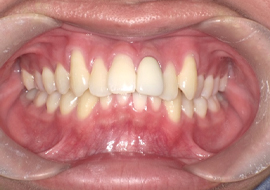
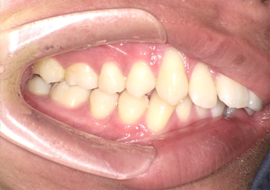

After
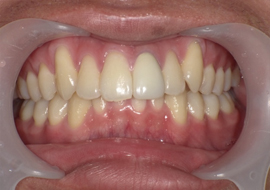

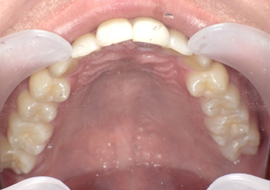
| Chief complaint | I want to correct the protruding upper front teeth (I want to correct protruding teeth) |
|---|---|
| age | --- |
| Duration of treatment | About 5 months |
| Treatment details | I treated only the upper jaw with Invisalign iGo. I removed a small amount of space between the front teeth to create space for the protruding teeth and align them neatly. |
| Risks of treatment | Space is created by grinding down the spaces between the teeth, which can sometimes cause tooth sensitivity. |
Case 2
Before

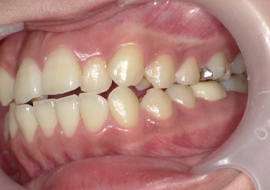
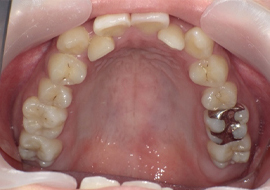
After
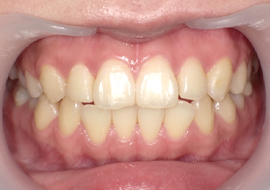
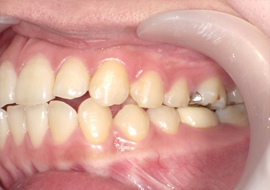
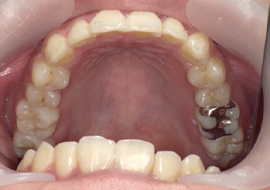
| Chief complaint | I want to fix my crooked upper front teeth |
|---|---|
| age | --- |
| Duration of treatment | About 1 year |
| Treatment details | Only the upper jaw was treated with Invisalign iGo. With minor orthodontics, the third tooth from the front cannot be moved, but with this treatment it can be moved, so I was able to neatly align the areas that bothered me. |
| Risks of treatment | Space is created by grinding down the spaces between the teeth, which can sometimes cause tooth sensitivity. |
Case 3
Before
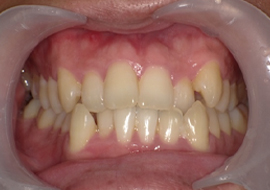
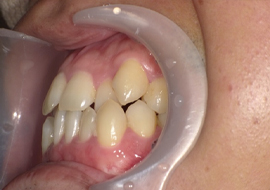
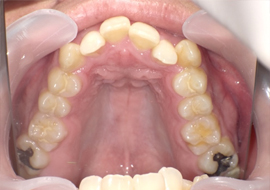
After
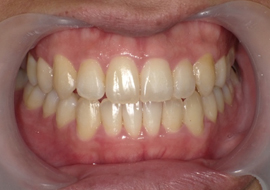
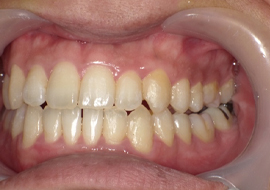
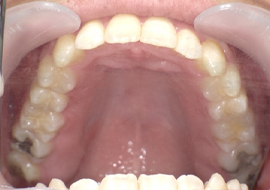
| Chief complaint | I want to correct the crookedness of my upper and lower teeth. |
|---|---|
| age | --- |
| Duration of treatment | About 10 months |
| Treatment details | Treatment of upper and lower jaws with Invisalign iGo. By widening the narrow teeth alignment, crooked teeth were neatly aligned. |
| Risks of treatment | Space is created by grinding down the spaces between the teeth, which can sometimes cause tooth sensitivity. |

